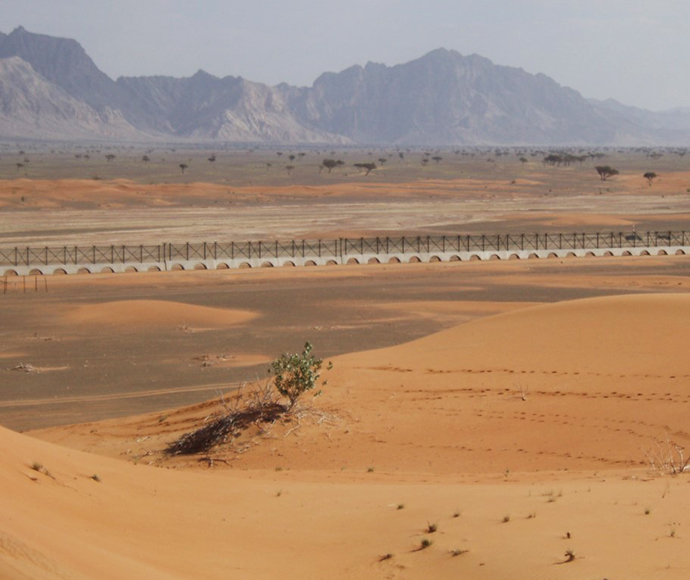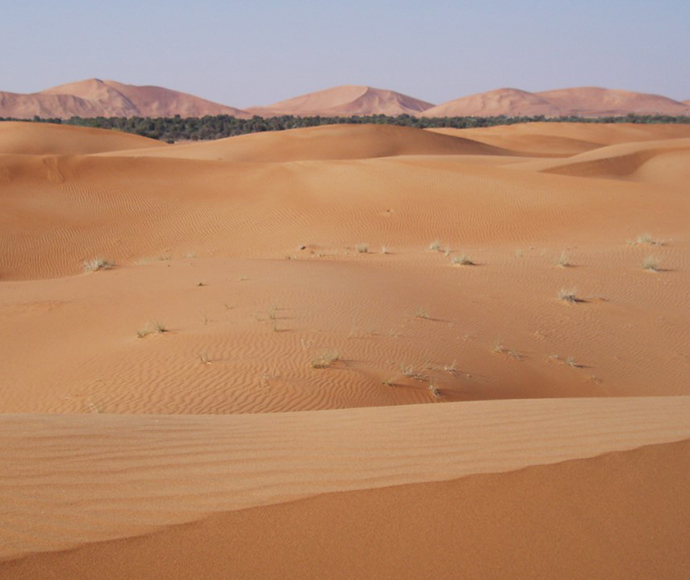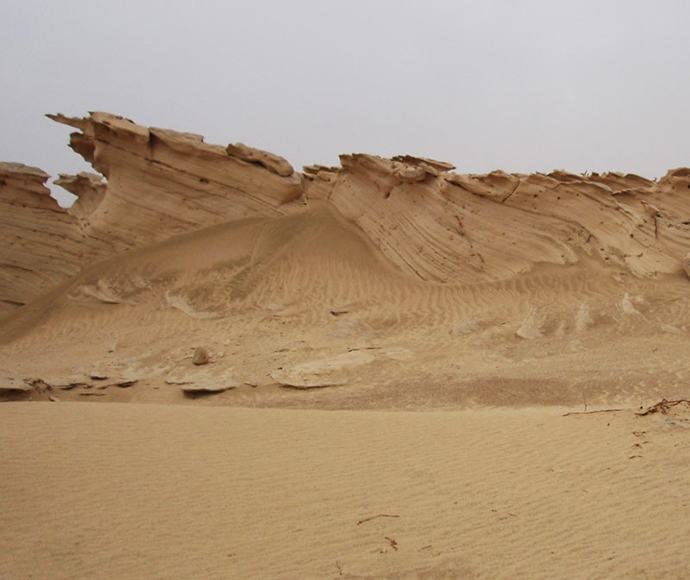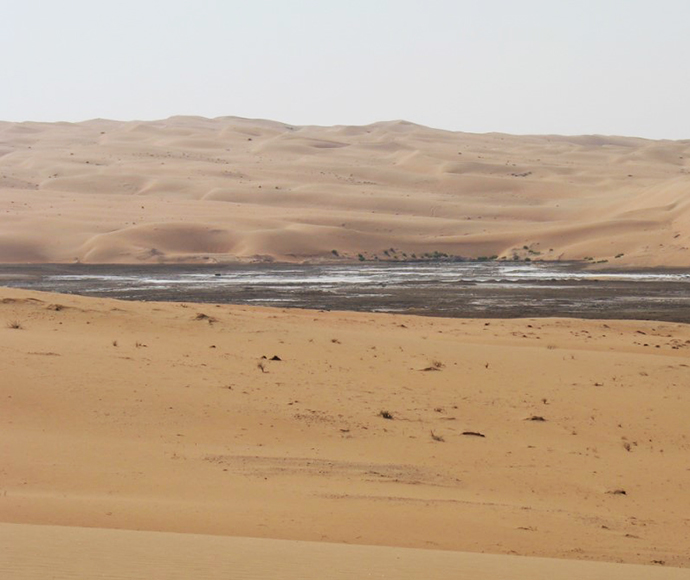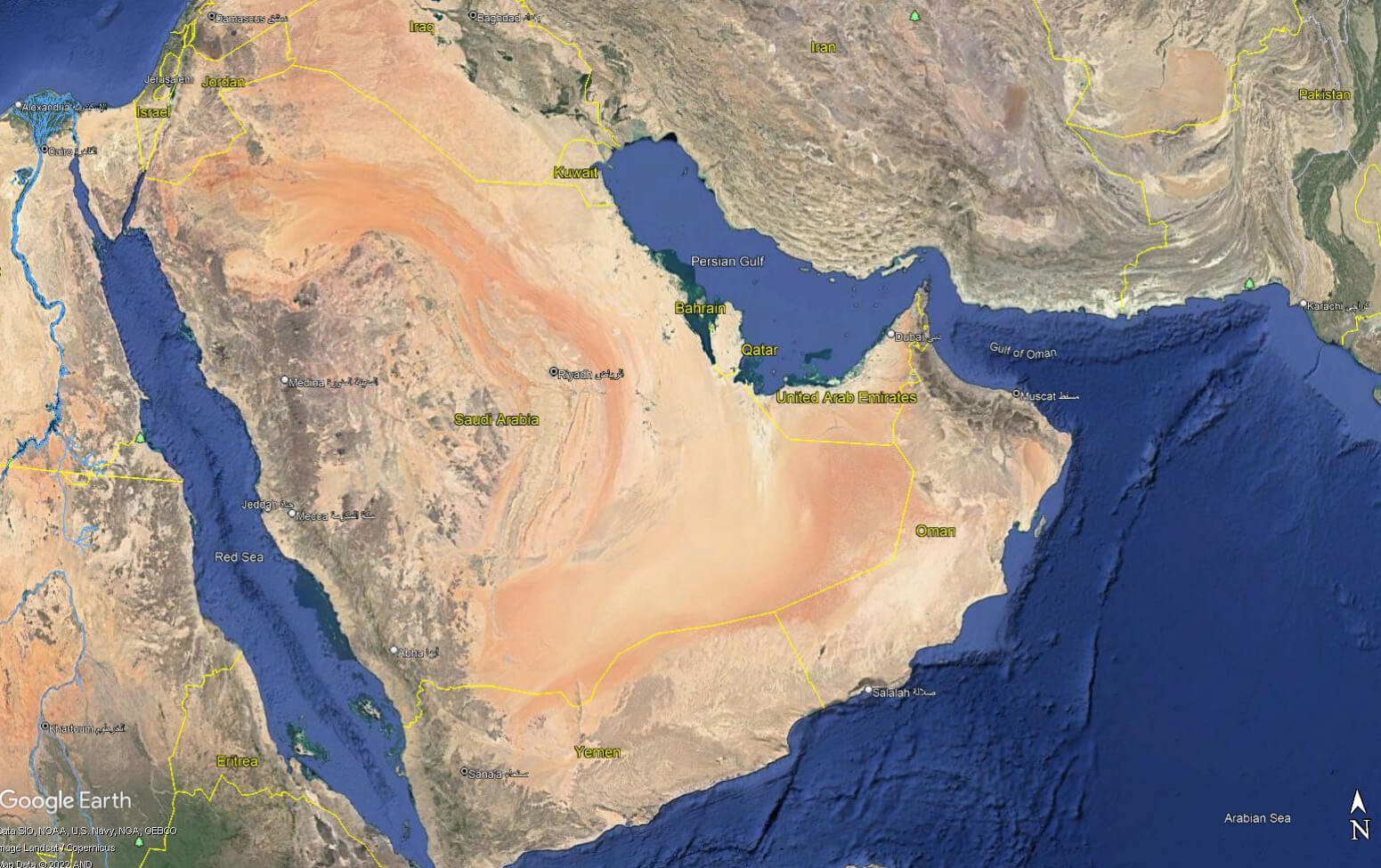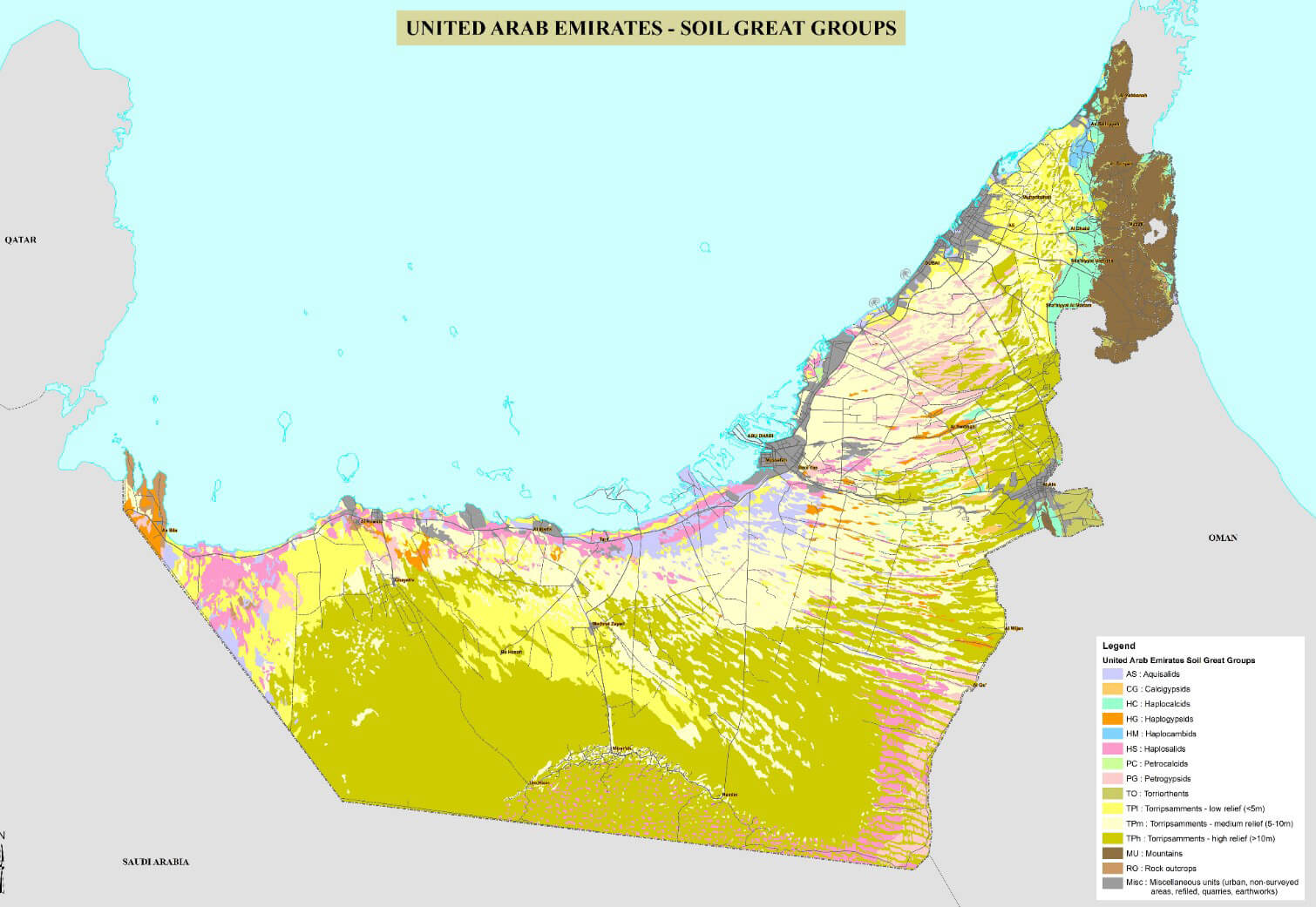Arabian nights, and days (I)
Not all work undertaken by Soil and Land Assessment Team (SALAT) team members is conducted in New South Wales. The team's expertise has been sought for projects that support global food security in various places, including the United Arab Emirates (UAE).
Soil survey of the emirate of Abu Dhabi
In 2006 and 2007, I (David Morand) was asked by the then Western Australian Department of Food and Agriculture to participate as a senior soil surveyor in the soil survey of the emirate of Abu Dhabi. This project was undertaken on behalf of the International Center (sic) for Biosaline Agriculture (ICBA) and the Abu Dhabi Environment Agency (EAD). Projects such as this not only support global food security but develop critical expertise that helps improve the Australian environment and food production. Australia like Abu Dhabi has a range of hostile environments and soils including saline ones and the lessons learnt in Abu Dhabi can be applied in the Australian and NSW context.
The emirate of Abu Dhabi occupies about 85% of the total land area of the United Arab Emirates. A comprehensive soil survey, consisting of 2 phases, was completed to provide soil and land information for future land use planning within the emirate. Phase I consisted of a large scale (1:100,000) extensive survey; phase II was an intensive (1:25,000) survey of several distinct areas. Much of the emphasis of this phase was evaluating areas best suited to irrigated agriculture.
Most of Abu Dhabi is covered by sand dunes and sand sheets, with intervening plains often consisting of gypsum and carbonate hardpan soils. Rock-like fossil dunes (aeolianite, or miliolite) are common in the coastal areas. A small outlier of the Hajar Mountains, Jebel Hafeet, occurs in the east, along the border with Oman.
Soil survey teams comprised soil scientists from Australia, India, Pakistan, Bangladesh and Sudan. Quality assurance was provided by scientists from Australia and the USA. As one of the 2 senior soil surveyors, I was responsible for the organisation, coordination, technical and field direction of the 3 teams of soil surveyors and technical assistants/drivers. Arguably, one of my most important roles was allocating vehicles to the field staff on Fridays (the weekend in UAE). Some would want to go to Abu Dhabi (city), and others to Dubai (city). Vehicle availability rarely matched the demand. Digging holes in the field was a much easier task.
A considerable amount of field work was off-road. A typical day would involve collecting soil profile descriptions along transects within the area of interest, extricating ourselves from numerous bogging incidents while doing so. Conditions like heavy morning fogs and sandstorms could add both interest and delays to the day. The field hands did all the digging and site preparation, a situation that I was surprisingly quick to accept. Occasionally I was reluctantly permitted to assist with excavating through rock-like hardpan material when it occurred.
Soil data collection included 228,000 observations using a soil auger or sand spear (a modified corer for sampling loose sand), 500 detailed sites using pits, and 300 deep drilling sites.
The work in Abu Dhabi provided excellent opportunities to:
- expand soil survey and soil classification knowledge
- geomorphic knowledge
- form networks with international (and national) colleagues
- showcase the department's expertise and professionalism
- provide soil and land management knowledge that can be applied regionally in The Gulf, Australia, and other arid areas.

